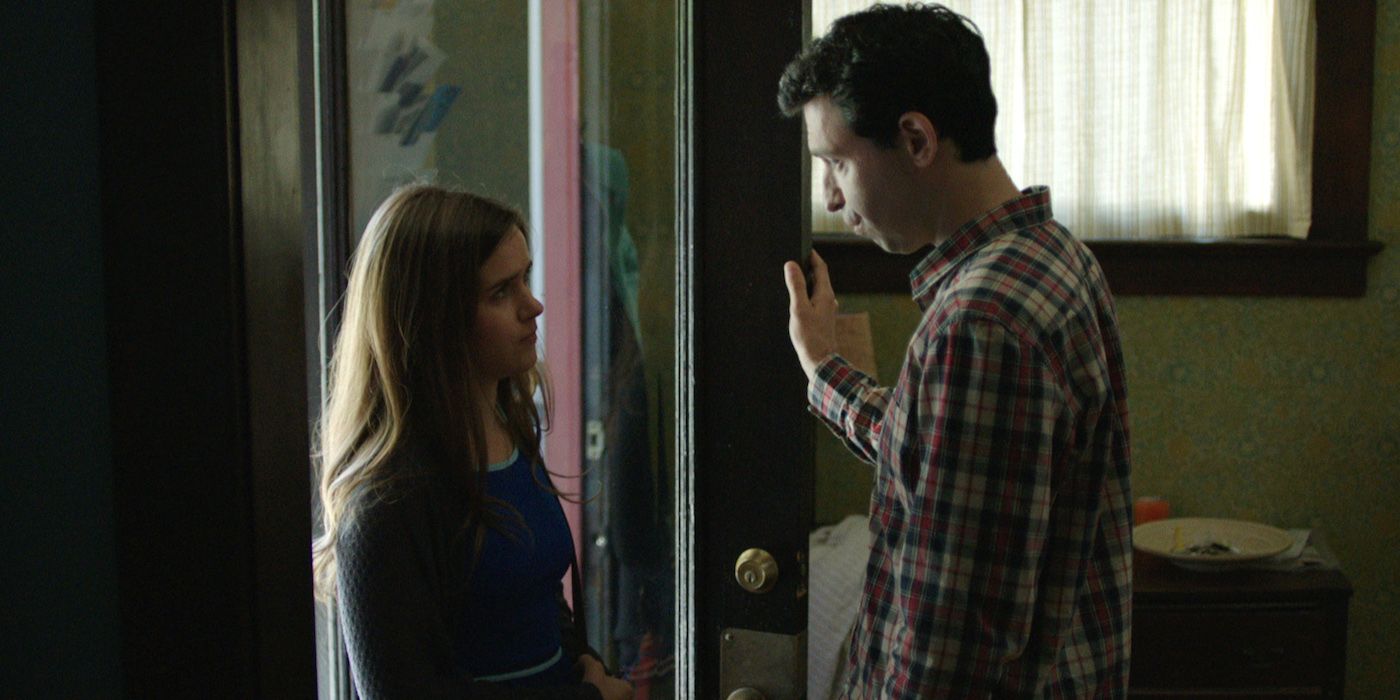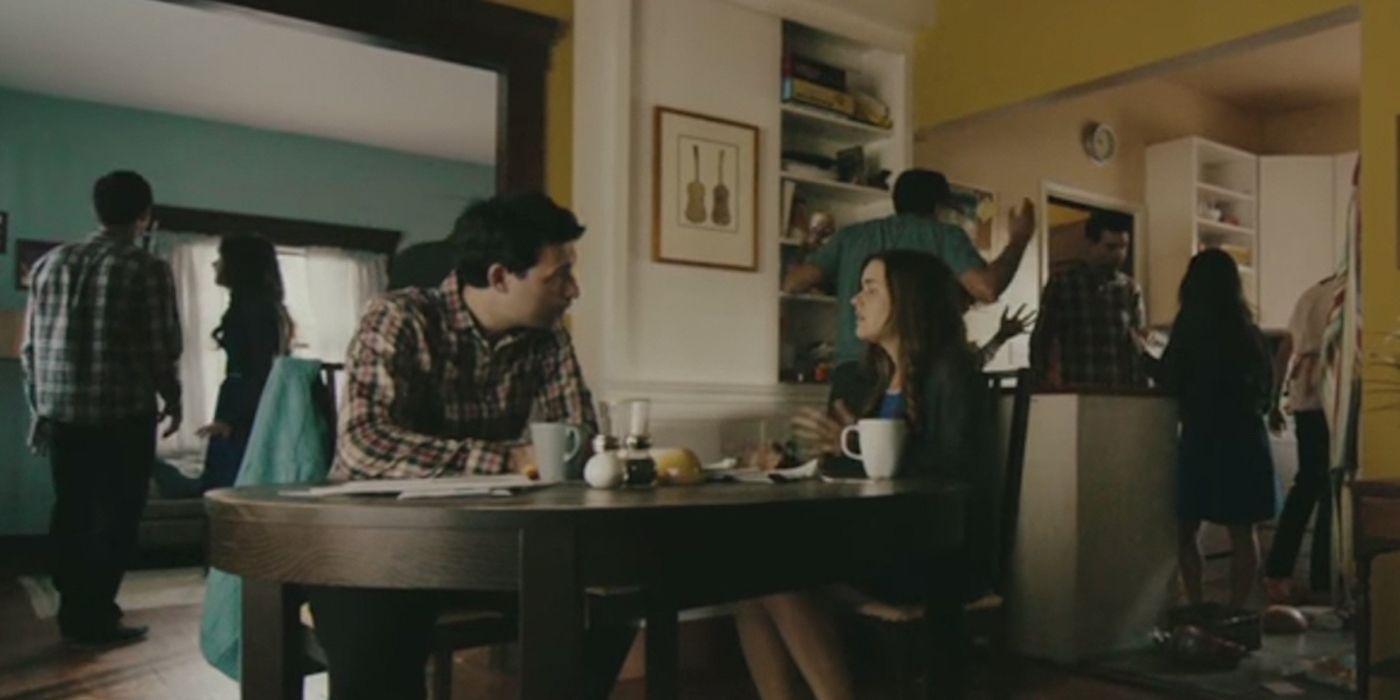A year ago, the Academy Award for Best Picture being given to Everything Everywhere All at Once might've seen unimaginable. While they may not have been chasing the Oscar statue, directing pair Daniel Kwan and Daniel Scheinert's second film encompassed all of their passions bundled in various genres and storytelling devices: fantasy, martial arts, multiverses, heritage, slapstick comedy, and family. However, their defining film can be traced back to another idiosyncratic project that the duo, collectively referred to as the Daniels, directed in 2014. This 8-minute short film, if it can even be called that, Possibilia, solidified the true unique vision of the Daniels before Everything Everywhere All at Once.
The Components of Interactivity in 'Possibilia'
The standout element of Possibilia is undoubtedly its ambiguous medium. This film is an interactive movie—a form of entertainment that blurs the line between films and video games. The deemed credibility of interactive films as a true art form has been up for debate for years, with famous critics Gene Siskel and Roger Ebert dismissing its artistic value. "We don't want to interact with the movie. We want it to act on us!" proclaimed Ebert when discussing Mr. Payback, a 1995 interactive movie. Siskel added that people ought to "play the video game (in the lobby of a movie theater). Don't try and mix the two of them together. It's not going to work." The form taints the traditional notion of filmmaking and film-viewing experiences. For that reason, interactive movies may struggle to be recognized as a respectable form at the same level as feature films. This did not prevent the Daniels from trying something new and bold, just as they did in 2022 with Everything Everywhere.
Possibilia allows the viewer to control the film's narrative by selecting various perspectives that expand in selection as the film progresses. The minimalist plot of the film complements the choose-your-own-adventure quality of the short, which follows a contested argument between two lovers Pollie (Zoe Jarman) and Rick (Alex Karpovsky), whose relationship is now on the rocks. The short begins with a fight erupting between the two, motivating Pollie to consider breaking up with her boyfriend. The point when Rick attempts to reconcile the differences with his girlfriend at the front door, viewers are granted the ability to navigate between two perspectives at the taskbar at the bottom of the screen. First, there are only two windows, but they gradually multiply into 4, 8, and 16 different perspectives to watch the story. As the film winds down, the selection of viewpoints reduces inversely. Possibilia ends right where it all started, with Pollie and Rick sitting at a table and the latter asking "what's a girl like you doing in a place like this?" This film does not end, per se. Instead, it runs on an endless cycle.
The interactivity of Possibilia operates less like differing perspectives of a fight and more like an exploration of alternate universes. Pollie and Rick arguing with each other and grappling with the future of their relationship is inevitable. Their clash is distressing, but depending on the direction of the viewer, it can be managed peacefully, chaotically, or somewhere in between. One screen consists of the two sitting on the front porch smoking, while an alternate timeline shows them getting physical with each other. Despite the range of emotions shown in 16 different instances of their argument, the dialogue remains the same across all multiverses. Towards the closing moments of the short, the other multiverses can be seen on screen sharing the setting with the selected viewpoint. Eventually, depending on the user selection, either Pollie will combine with her multiverse Pollies or Rick will combine with his multiverse Ricks.
The Daniels are in complete control of the process of navigating between multiverses. Dialogue between the two characters properly matches up when switching to another viewpoint. Unlike a video game or even typical interactive games, there is no correct decision on the user's end. Based on which timeline the viewer follows, either Pollie or Rick will reach slightly varying conclusions as to the future of their relationship, with some suggesting that they have temporarily resolved their differences, while others indicate that animosity still resides beneath the surface.
'Everything Everywhere All At Once' and its Connections to 'Possibilia'
The Daniels' curiosity about the multiverse can be traced back to this short. From the get-go, Possibilia is indicative of the duo's cinematic language, with its opening text defining the film as “an interactive love story set in the multiverse...whatever that means.” This sample of ironic humor, in addition to the clear multiverse parallels, would go on to be integral to Everything Everywhere All at Once. In essence, the narrative flow of their 2022 film, jumping from the alternate lives of Evelyn Wong (Michelle Yeoh), matches the process of Possibilia viewers controlling their narrative. Even though the integration of a multiverse that exists within an icy romantic relationship is used as the hook for the interactivity element of the short, its utilization is effective in subtle ways. In the framework of the basic dramatic arc of the Pollie and Rick characters, these alternate viewpoints of their argument are not demonstrated as a flashy filmmaking technique. Rather, they are employed to signal that, in every universe, there will always be some form of lingering conflict and tension between the two lovers. The field of alternate realities available for the viewer to observe represent differing courses of action in dealing with these emotional issues. If left unresolved, however, the discord between the couple will never dissipate.
While the genre and tonal blending of EEAAO helped make the Daniels' film formally daring, its heart was contained with wholesome ideas that were accessible to a more traditional audience. In the end, the film was not about a bagel, hot dog fingers, or references to The Matrix or Ratatouille, it was about family and reckoning with past mistakes. Hidden behind the pomp and circumstance of the ability to select additional perspectives of the story is a simple tale about a relationship. The Daniels have shown an interest in expanding conventional ideas with their unique taste and sensibilities, ones that do not conform to traditional storytelling. The emotional weight of this romantic partnership is managed with complete sincerity. The brief dramatic arc that is presented stands on its own and is not just an empty ploy to give credence to the multiverse component. Excluding the sophomoric humor and language that seems loosely inspired by Internet/meme culture, Everything Everywhere shares the DNA of Possibilia. Considering that Daniel Kwan and Daniel Scheinert have vaulted to major prominence in the field of auteur cinema, examining the short film that codified their cinematic playbook is certainly worthwhile.


